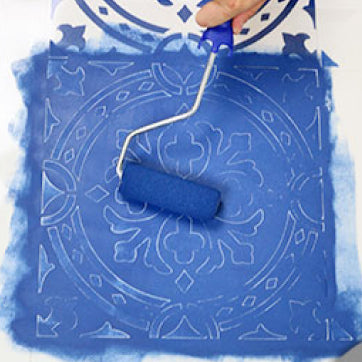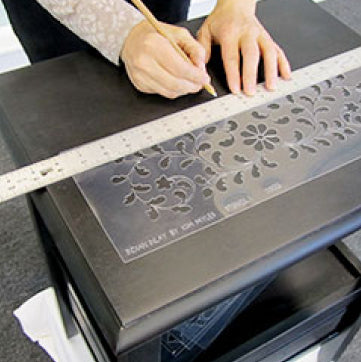

Stenciling Instructions: Learn How To Stencil from the Pros
Our stenciling instructions and techniques have been developed by professional decorative artists Janna Makaeva and Greg Swisher with 20+ years of painting and stenciling experience. We are happy to share our stencil expertise and knowledge, as we want your stencil project to be a complete success! Stencils can be used for many DIY decorating projects: accent wall stenciling, floor tile stenciling and furniture painting. You can even create your own custom stenciled textiles. Please follow these illustrated instructions and watch our stencil videos and watch our stencil videos.



























